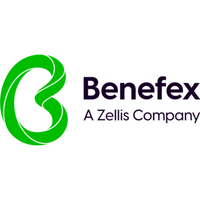The psychology behind great employee communications

If you really want to ‘put the human back in to HR’ then your communications need to be personal, and keep behavioural and psychological insights around your people at the centre of the creation process and campaign strategy. That means, before you can design the communication, you need to understand your people.
Understanding their audience is something retailers and consumer organisations do brilliantly, so what inspiration can we take to bring that consumer experience into the employee experience?
Your employees are complex
People are more complicated than we give ourselves credit for. Consider how much our brains are processing in any given moment; we are constantly computing and processing information just to keep us moving, thinking and safe. Add in the nuances of being human and today’s always-on, constantly-connected society, and it equals a state of overload for the mind.
To engage employees with communications, first we need to treat them as complex beings.
The world is a busy place, and our brains have so much to consume and process that they simplify things to manage the ‘workload’ before organising them into groups. From people and topics to images and shapes – we go through this process with everything we see, hear and think. Gestalt psychology is a theory which suggests that, when the human mind receives partial information, it fills in the gaps in an attempt to see things as a whole, rather than just the constituent parts. This effect plays an important part in user design for technology and interfaces, but it can also be applied to communications.
Here are two examples:


Looking at the images, you can identify that one creates a cube shape and one is a dalmatian dog. But thinking literally, they’re just a collection of assorted shapes. No connecting lines, no outline, no colours. Yet our brain has grouped them together to assume an image that isn’t really there, just as we might see a face in a cloud or rock formation.
By applying these same principles to the layout of your email or brochure, for example, you can create more intuitive communications.
People approach a benefits webpage or wellbeing brochure the same way they would approach the picture above – by clustering things together for easy processing. You link this photo with that text, that video with this paragraph; you group elements together not by association necessarily, but by subconscious assumption. The starting point of your communications design needs to take these nuances into account to design the most effective experience.
Decision overload
The ultimate goal of your communication may be one of many things, but you can guarantee that, within that goal, your employees – the audience – will be required to make a choice at one point or another. This may not be picking between option A and B per se, it may be choosing whether to click ‘read more’, whether to flag the email to look at later, or to simply delete it, unread.
Either way your communications need to be convincing.
Nudge theory
One way to do this is using ‘nudge theory’, a behavioural psychological concept which focusses on creating choices for people in a way that encourages a particular decision through positive reinforcement. By presenting choices in a certain way, it creates ‘choice architectures’ for these actions that encourage (but don’t force) people to make better decisions. Adding in psychological reward mechanisms then reinforces these as a habit. Thus, people make wiser decisions and – while the decision is still theirs – they get ‘nudged’ one way or the other.
Nudges are around us every day outside of work – consider the speed limit signs which display a smiley face when you’re under the limit, versus ones which flash a number when you’re over the limit. It might not sound like much, but the power of nudge theory often lies in its simplicity. Putting this into a workplace context, nudges may be as simple as rewording a ‘Benefits submission confirmation’ email to a ‘Congratulations on submitting your benefits!’ email. Other examples include offering a small prize for the first team to book all its annual leave days, or giving out stickers from different providers when employees browse a benefits launch.
Emotions and decisions
Even at work our decisions are driven by emotional thinking above rational thinking. The ‘semantic marker hypothesis’ from neuroscientist Antonio Damasio, provided evidence that certain sub-cortical regions (these are involved in complex activities such as memory, emotion, pleasure and hormone production) in the brain contribute emotional weight to the decisions we make.
Psychologist Daniel Kahneman also suggests we make decisions based on a ‘dual-core’ system in the brain – one part that is automatic and emotional, and one that is cognitive and controlled. These take different information from parts of the brain and combine them to form our decision-making process.
Research has also shown that the more information we are attempting to process, the more likely we are to make emotionally-based decisions. Considering our previous discussion of information overload in the modern day, it’s no wonder that emotional decision-making plays a large part in our everyday life – at home and at work
Considering even these snippets of research, we can see emotions are intrinsic in decision-making; after all, how can we choose an option if we have no feeling about it? It’s clear that emotions will colour decision-making, making it crucial that our communications appeal to employees’ emotions and give clear rationale and information.
Final thoughts
Every day our brains are overloaded with information. If employers truly want the best for their people, you need to enable them to make clear, well-informed decisions, empowered by a communication strategy which acknowledges the complexities of the human brain and emotions.
The question now, is what does this look like? We explore just that in our report, The complete communications guidebook – download it now for a straightforward walkthrough to creating and sending impactful, engaging communications.
This article is provided by Benefex.
In partnership with Benefex
The home of award-winning employee benefits, reward, recognition, & communications.







